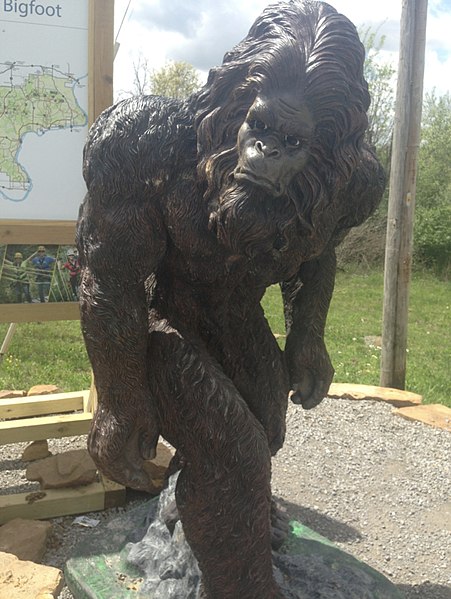Canadian folklore is the traditional material that Canadians pass down from generation to generation, either as oral literature or "by custom or practice". It includes songs, legends, jokes, rhymes, proverbs, weather lore, superstitions, and practices such as traditional food-making and craft-making. The largest bodies of folklore in Canada belong to the aboriginal and French-Canadian cultures. English-Canadian folklore and the folklore of recent immigrant groups have added to the country's folk.
Bill Reid's sculpture Raven and the First Men, showing part of a Haida creation myth. The Raven represents the Trickster figure common to many mythologies. The work is in the Museum of Anthropology at the University of British Columbia.
Depiction of La chasse-galerie (The Flying Canoe), a popular French-Canadian folktale. The coureur des bois/voyageurs were featured in the folklore of Quebec.
The Big Fiddle of the Ceilidh in Sydney, Nova Scotia. Canadian fiddle is a recognizable part of Maritime culture.
A wooden statue of folk hero Big Joe Mufferaw in Mattawa, Ontario. Mufferaw was based on the exploits of lumberjack Joseph Montferrand.
Bigfoot, also commonly referred to as Sasquatch, is a large and hairy human-like mythical creature alleged by some to inhabit forests in North America, particularly in the Pacific Northwest. Bigfoot is featured in both American and Canadian folklore, and since the mid-20th century has grown into a cultural icon, permeating popular culture and becoming the subject of its own distinct subculture.
Bigfoot
"Sassy the Sasquatch" roadside attraction statue in the Garden of the Gods Wilderness within the Shawnee National Forest, Illinois.
A reproduction of the petroglyphs at Painted Rock.
"Bigfoot" carving at the Crystal Creek Reservoir in Colorado.








